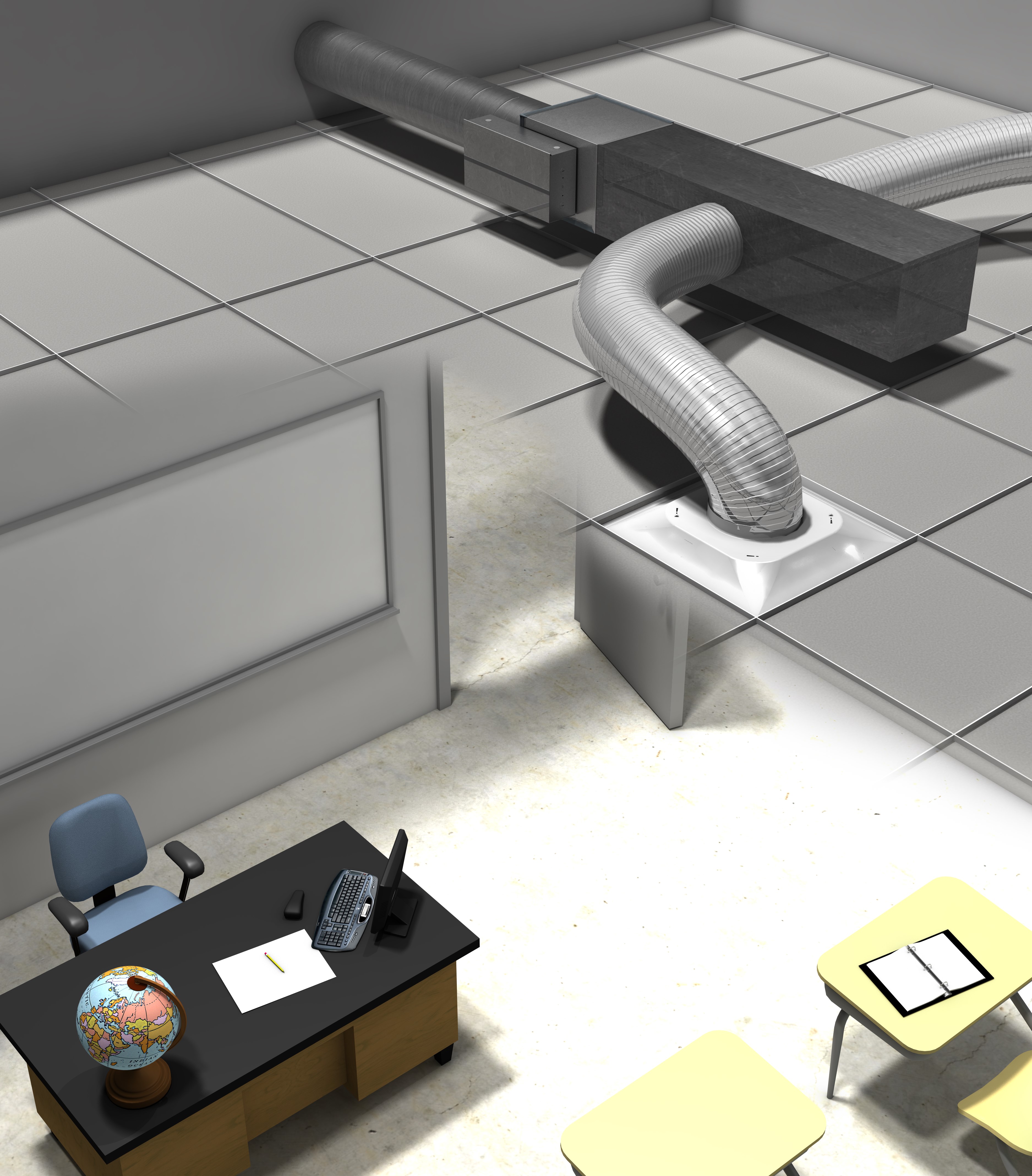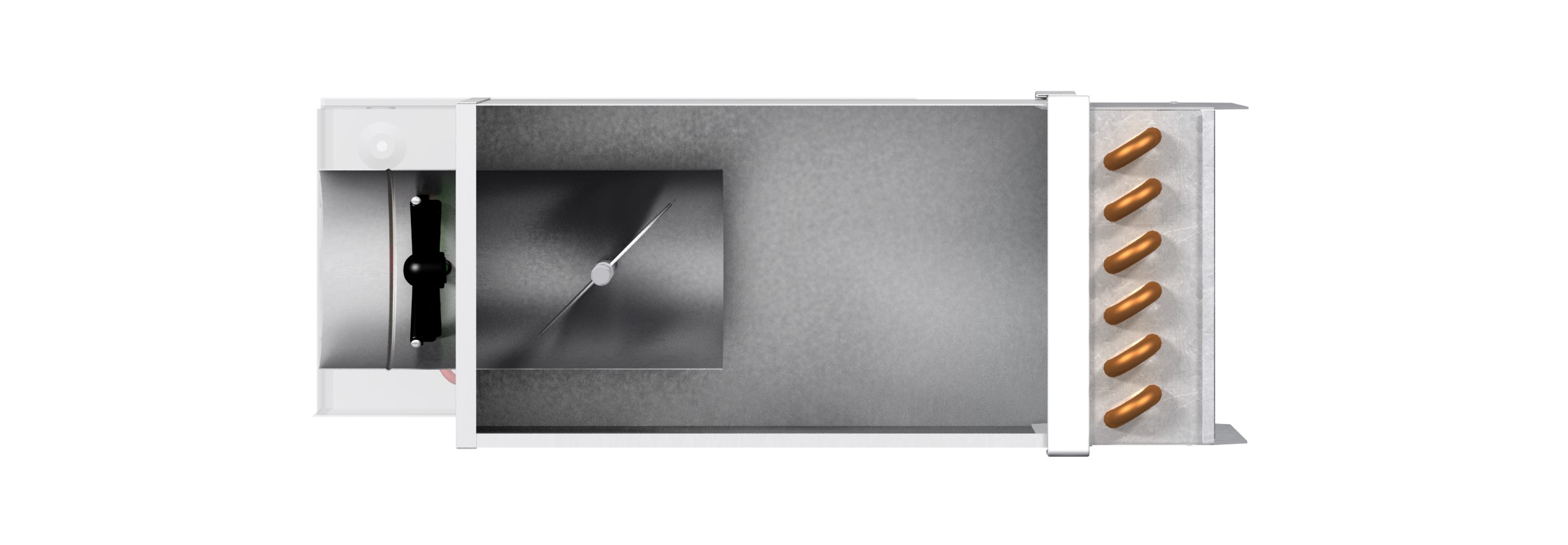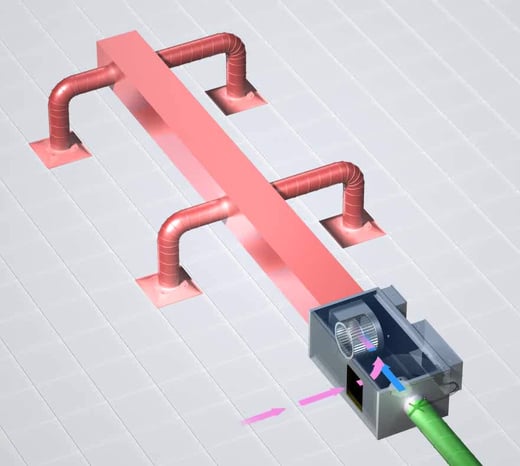An Essential Design Consideration for Mechanical Engineers
Pressure drop – the difference in pressure between two points in a fluid-carrying system – is one of the most critical design considerations for air distribution equipment in the HVAC industry. The problem with pressure drop for terminal units is that there are a number of metrics that are often confused with one another despite referring to different performance variables. These include static pressure drop, velocity pressure drop, pressure drop associated with acoustics and pressure drop associated with accessories.
 |
| For terminal units, the most relevant types of pressure drop include minimum operating pressure drop, static pressure drop through equipment accessories and differential pressure drop |
Minimum Operating Pressure Drop
The most applicable type of pressure drop for ductwork design is minimum operating pressure drop, which is the static pressure drop of a piece of terminal equipment at its maximum design-day airflow rate. In the case of a single duct with a hot water reheat coil, for instance, this would be the pressure drop of the terminal assembly (inlet and casing) and water coil at maximum cooling airflow. This is the worst-case static pressure drop through a terminal unit that the supply air fan would need to account for – essential for mechanical engineers to know as they design the critical path of their duct layout. Notably, this value is associated with static pressure drop only.
 |
| The minimum operating pressure drop is the static pressure through the terminal unit assembly |
Proper sizing of a supply air fan is based on total pressure drop, which is the sum of static pressure and velocity pressure losses. The velocity pressure drop of a single-duct terminal is defined by the following equation:
 where ∆VP is the velocity pressure drop, CFM is the airflow rate, D is the primary air inlet diameter, and W and H are the inside width of the box outlet.
where ∆VP is the velocity pressure drop, CFM is the airflow rate, D is the primary air inlet diameter, and W and H are the inside width of the box outlet.
Static Pressure Drop Through Equipment Accessories
Another key pressure drop metric for terminal units is the static pressure drop through equipment accessories, most notably through water coils. This is commonly referred to as air pressure drop or maximum air pressure drop in engineering equipment schedules. This is the static pressure drop through the accessory at the maximum scheduled airflow rate and is a component of a terminal unit’s minimum operating pressure drop.
Differential Pressure Drop
Another important pressure drop associated with terminal units is differential pressure drop, which is often confused with minimum operating pressure drop. In reality, this value is a static pressure differential from the inlet of the terminal unit to its discharge and is highly dependent on the system in which the terminal unit is applied.
 |
| Differential pressure drop is installation specific; it is calculated by taking the difference between a terminal's inlet static pressure (green), minimum operating pressure drop and downstream static pressure (red) |
For example, a terminal unit with a water coil air pressure drop of 0.36 in.w.g. applied in a system that has 1.25 in.w.g. of inlet static pressure and 0.25 in.w.g. of downstream static pressure would have a resulting differential pressure drop of 0.64 in.w.g. This means that there would be a static pressure measured at the inlet of 1.25 in.w.g., a static pressure measured at the discharge of 0.25 in.w.g. and a calculated static pressure drop across the terminal unit from inlet to discharge of 0.64 in.w.g.
Differential pressure drop is an important variable for estimating acoustical performance of terminal equipment. Furthermore, a duct critical path with high terminal differential pressure drop would be descriptive of a system using higher fan energy.
Understanding pressure drop is essential for designing a duct system, both to properly size the components and to ensure the system is running efficiently. If you need advice on your project, the Air Moving team is here to help. Email us at airmovement@priceindustries.com.



